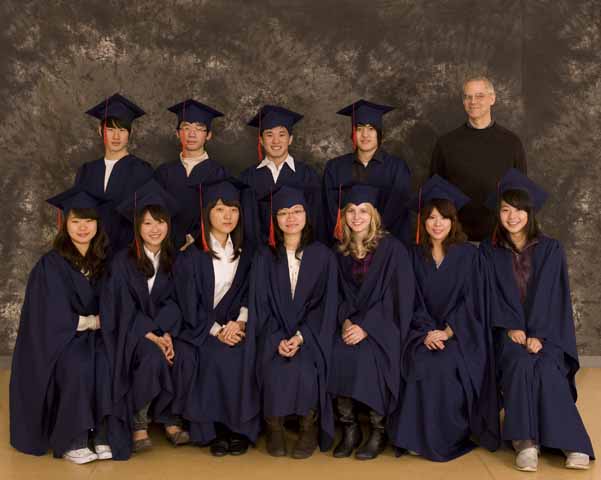By constantly encouraging students to explore the questions raised in a text—instead of searching for its ‘messages’—we will help them learn to be sensitive, perceptive readers.
A great work of literature, as evocative as a tree or as the world itself, invites us to respond with our minds and our hearts, but it does not prescribe those responses. It invites us to explore, to reflect, to read and re-read. It does not say to us, ‘This is life’ or ‘This is the world’ or ‘This is what people are like’. Instead it shows us life, the world, and people, from a certain angle (or, more often, from a variety of angles) and asks: what do you think? what are you feeling now?
Unfortunately, many students learn in school that stories, plays, and poems are cryptic messages meant to be deciphered. As I wrote in one of my examiner’s reports* a while back,
Most students have been taught that literature is filled with hidden messages and meanings cleverly disguised with symbols, metaphors, and other ‘literary devices’. Their job is to decode the messages and file them under various standard headings such as ‘existentialist’, ‘nihilist’, and ‘archetypal’. Every realization is an ‘epiphany’; everyone who thinks is ‘Apollonian’; everyone who feels is ‘Dionysian’; every unusual event is an example of ‘Magical Realism’. One candidate actually made this theory of literary criticism the opening sentence of her essay: “It is important to understand the intentions of authors as most of the time they are trying to convey hidden messages.”
Not surprisingly under such circumstances, most students simply retail ideas that their teachers or other sources have fed them. When the same interpretation of a work is repeated by student after student, it’s clear that they are repeating what they have been taught.
In my own school days I learned to hate poetry because each poem was presented as a riddle to be solved. I remember wishing I could confront these poets in person. “Dammit,” I would say, “if you have something important to say, then why don’t you come right out and say it?! My teachers, evidently, were not particularly bad or out of the ordinary in this respect, as one can infer from Billy Collins’s wonderful “Introduction to Poetry”:
I ask them to take a poem
and hold it up to the light
like a color slide
or press an ear against its hive.
I say drop a mouse into a poem
and watch him probe his way out,
or walk inside the poem’s room
and feel the walls for a light switch.
I want them to waterski
across the surface of a poem
waving at the author’s name on the shore.
But all they want to do
is tie the poem to a chair with rope
and torture a confession out of it.
They begin beating it with a hose
to find out what it really means.**
To be sure, it is perfectly possible to tell a story, or write a play or poem, with the intention of sending a message or making an argument. Most such works quickly fall by the wayside and are easily dismissed. Perhaps they have some historical significance, but they are not taken seriously as works of art.
Equally clear is the case that certain stories written for children and adolescents are written with the intention of teaching their readers to be kind to others, or to avoid illegal drugs and unwanted pregnancies. Again these are not serious works of art.
Some children’s stories, of course, do achieve a standard recognizable as art, and they illustrate my argument here quite well. What is the ‘message’, for instance, of A.A. Milne’s ‘Pooh’ stories, or of Arnold Lobel’s ‘Frog and Toad’ stories? Like all good stories, these tales for children create an imaginary world that raises questions: Who are we? Where are we? What are we doing here, and what should we be doing? These are the questions raised again and again by literature and by other forms of art. What distinguishes literature from propaganda or moralizing tales? For one thing, the questions remain open: it is up to the readers or audience to answer them.
Tolstoy’s Anna Karenina makes an interesting example. From the epigraph alone (“Vengeance is mine, saith the Lord; I will repay”) one could infer what the historical record shows: Tolstoy began his tale with the moralistic idea of showing us that Anna was a sinful woman deservedly punished by God. But along the way, a funny thing happened: Tolstoy seems himself to have fallen in love with Anna, at least temporarily, and at least enough to bring his moral certitude into doubt. Indeed, his alter-ego protagonist, Levin, visits Anna when she and Vronsky are living at Vronsky’s country estate. Levin, prepared to meet an immoral woman, finds her delightful and charming. Only when he gets home to his wife is his newly-sympathetic view of Anna brought down to earth with a bump. Anna does suffer a famously terrible end, but as readers we are not at all certain that she deserves her fate. As critics have often remarked, Tolstoy the artist wins out over Tolstoy the Christian moralist. The story that Tolstoy apparently set out to write would perhaps have ‘sent a message’; but if it had finished up that way, it would not be regarded today as one of the greatest novels ever written. The novel does not leave us with a message; instead it leaves us pondering a multitude of questions.
I am not arguing, of course, that an author’s tone—his or her attitude toward characters and events—cannot be inferred. It’s clear that Tolstoy sympathizes more with certain characters than with others, but these sympathies and antipathies are not ‘messages’ that close off alternatives. On the contrary, when Tolstoy treats Oblonsky with comical delight, we wonder: why he should remain beloved by all—including the author—when his sister Anna (who is guilty of the same ‘sin’) becomes a pariah doomed to a tragic death?
Shakespeare remains the supreme example in our literature of an author who does not send messages. His plays are filled with ideas, with characters and events that raise questions, but at no time can we imagine Shakespeare sitting down to write, thinking, “Ah, now I will write a play with the message, ‘if you need to take revenge, act quickly!’ “
The search for messages in literature usually includes the notion that the author intended to send those messages, and that we can figure out the author’s intentions. Literary criticism has demolished this idea over the past century, and yet it persists. But why? It seems to be part of the moralistic theory of literature, going back to the Middle Ages, in which art is supposed to improve or uplift society. A story in which evil triumphs would corrupt the morals of the people. Therefore authors, by this account, should tell tales in which good is rewarded and evil punished. Clearly the morally uplifting message lies at the heart of such stories, and the intention of the author is to send that message. That this theory of literature persists can be seen in the familiar attempts to ban a book from the school curriculum or library.
But the search for the author’s intention is even more elusive and pointless than the search for the story’s message. Even if the author were present, and we could ask her—”What was your intention in writing this story?”—we still would not know. Perhaps the author would lie to us, or would just make something up, not knowing herself what her intention was; or would tell us, “I had no intention; I just wrote the story”. Or what if, like Tolstoy, she began with an intention that the story does not fulfill, or only partially fulfills? Let’s take Shakespeare’s ‘Merchant of Venice’, for example. What if Shakespeare were here to answer: “Did you intend for us to sympathize with Shylock or despise him?” Would the answer, whatever it might be, help us to read, view, and respond to the play? No. Whatever Shakespeare intended or did not intend, we have to make up our own minds.
We have to read the text, think about it, discuss it, and make up our own minds. There is no ‘right answer’. Adolescents, however, tend to think very concretely: they want right answers. Years ago I used to teach Dante’s Inferno and Chaucer’s Canterbury Tales back-to-back, and almost universally the students loved Dante and hated Chaucer. Why? In Dante ‘bad guys’ are punished in ways that are not only vivid and ghastly, but just. In Chaucer, on the other hand, we don’t know where we are morally. Everything is deeply ironic. The goodness of the good guys is doubtful; the bad guys seem to be both admired and worthy of forgiveness. Chaucer, in other words, is much more like the real world.
Because adolescents tend to think in concrete, black-and-white terms, it’s even more important for us to avoid binary, reductive discussions of literature. We need to expand their comfort zones, help them relax with the idea that there is no ‘answer’ in literature, and give them the analytical tools to observe the details of a text, see how they form patterns, and explore the possibilities that they offer.
————————
*As an examiner for the International Baccalaureate Organization, I mark World Literature essays for English A1.
**http://www.loc.gov/poetry/180/001.html



